Learning page for beginners No.1- What is a disk diffusion test ?
 |
Hello everyone, I am an editor of the Project Office in Hanoi, at the National Institute of Nutrition (NIN). Today, I'd like to interview with Mr. Ueda Shuhei, a microbiologist of University of the Ryukyus, and ask him how he is analyzing antimicrobial resistant bacteria with a disk diffusion test. |

Hello Mr. Ueda, what is a disk diffusion test ?
A disk diffusion test is a test on a sensitivity of a bacterium to an antibiotic.

Too difficult for me. I can't understand it at all.
Simply saying, to test whether a medicine can stop growing a bacterium or not.

Got it! You are checking whether a medicine can kill a bacterium or not, right ?
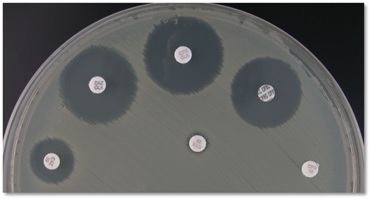


Let's see the sample above,
you placed white papers containing antibiotics on a plate filled with agar,
and let bacteria grow on the plate.
If a bacterium is killed by the antibiotics,
I can see a clear ring area around the white papers.
Area with no change means a bacterium is still healthy.
Am I right?
Yes, the clear circle is called a zone of inhibition,
there is a standard on the diameter of the zone,
so by measuring the diameter, you can see the sensitivity or
resistant power of bacteria to antibiotics.

Please show me how you are preparing a disk diffusion test.
First grow a bacterium culture overnight,
then put it into sterile saline water
to make a liquid of bacterial suspension,
adjusting that the turbidity becomes McFarland 0.5.
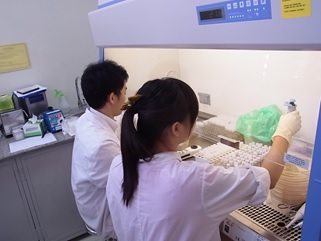

You are growing a bacterium what you want to test in a tube, right?
Oh Ms. Trang, she is working so hard.
After dipping a sterilized swab into the suspension containing bacteria,
you streak the surface of Muller Hinton agar plate with the swab by 3 times.
Then, you place antimicrobial disks on the plate and incubate it
at 37 °C for 16-18 hours.
Next day, you measure the diameter of inhibition circles.

Sounds like you are feeding bacteria to give them an injection of antibiotics, right ?
Oh, what is this pot?
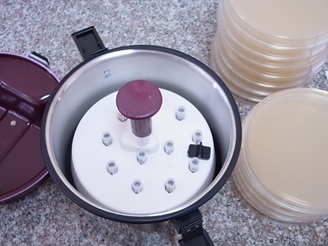
This is a disk dispenser,
enable you to place many antimicrobial disks on a plate at one time.
Very useful for doing the test for many times.

By using this, you can save your time, so nice.
And the next day

Have you got some results?
Yes, thanks to Ms. Trang's help, the results are clear!
Now, Ms. Ngan is checking the results
whether each ESBL*-producing E.coli sample is resistant to antibiotics or not.
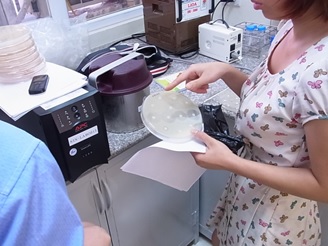

Oh, some antibiotics didn't work.
Is there any ESBL-producing E.coli resistant to all kinds of antibiotics?
No, I have never seen ESBL-producing E.coli resistant to all,
but there are some samples resistant to almost all antibiotics.

Sounds scary. But it is important for us to know about ESBL-producing bacteria.
Oh, you are keeping the data in detail !
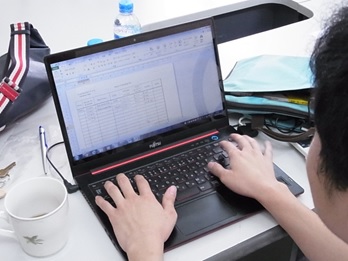
Yes, we are archiving the data day by day,
to publish an academic paper in a scientific journal.

That's great. Thank you very much Mr. Ueda.
* ESBL stands for Extended-spectrum beta-lactamase, which is a group of enzymes. ESBL can break several kinds of antibiotics. A group of bacteria producing the ESBL is called ESBL-producing bacteria, which is resistant to antibiotics.





